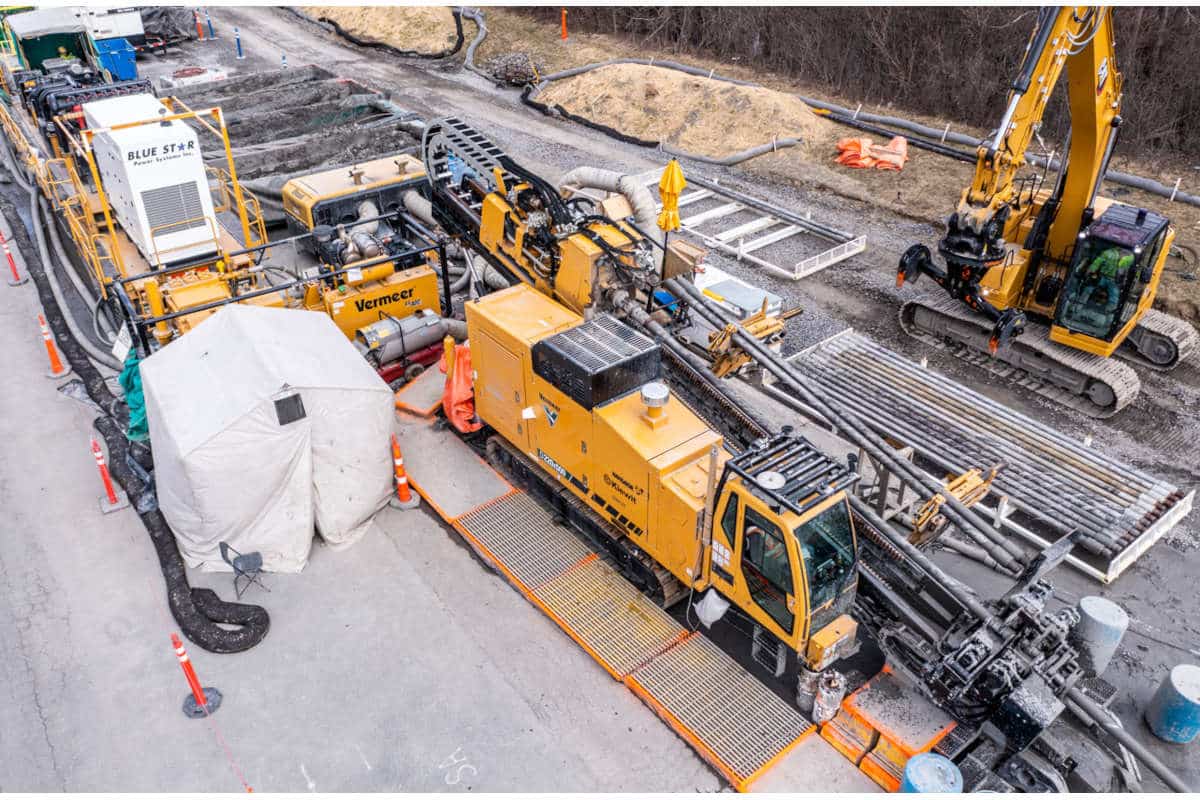Cold Weather & Your Drilling Pumps
Well, it’s that time of year again when the weather outside is getting colder and we need to start thinking about getting our equipment ready for those freezing temperatures.
We all know what we are supposed to do with our engines (check the antifreeze, install block heaters, etc.), but what about our pumps? Pumps left unprepared for freezing weather can cause problems on the jobsite and cost money in repairs and downtime, whether the downtime is making repairs due to damage caused from freezing or time spent thawing them out in the morning because we were not prepared for the freeze.
In our business the pumps we use move water or drilling mud (which is mostly water) and as we all know water freezes at or below 32 F. Freezing water cannot be contained. It will break anything that tries to keep it from expanding while freezing — this includes your pump. The ice is capable of splitting the power frame of your pump in two. If your power frame manages to take the pressures being exerted on it then something else will definitely bend or break. Maybe it is your piston rod, your pony rod, your connecting rod or possibly your crankshaft. All of these things cost lots of money to repair and cost lots of money in downtime. Taking a few simple precautions easily prevents these things.
If you are going to shut the pump off for any considerable length of time and the temperature is below freezing, you should drain all of the fluids from the fluid end of your pump. Before doing the following be sure the power source for the pump is turned off (i.e. engine, electric motor, etc.) and that there is no pressure contained within the fluid end. Remove the suction and discharge caps, lift the valves to let the fluid on top of them drain down starting with the discharge and then the suction. Close the suction valve from your fluid source and remove the drain plug in the bottom of your suction manifold. Remove the suction hose from the suction of your pump and drain. Remove your discharge hose from the discharge of the pump and drain.
For smaller pumps it is possible to use RV antifreeze and pump it through the entire system and this works fine but is not very practical on some of the larger pumps due to the volume of antifreeze that would be required.
Another way that I find particularly useful is to use compressed air. It takes a large volume of air to purge the entire system, but it is definitely quick and I have never had a problem with a pump freezing up using this method. Pump air directly into the suction of your pump from a fairly large volume tank and make sure your discharge valve is open. The fluid will come out the discharge in large slugs followed by the air. Shut off the supply of air a couple of times and allow any fluid in the pump to settle and repeat. This will ensure you get all of the fluid out of the pump.
Another thing to consider is the oil in your pump. Most manufacturers recommend going to a lower viscosity oil when the temperature gets below a given temperature. Also remember your liner wash system — most of us use water to cool the liners. Don’t forget to drain this system or your liner wash will freeze, plugging the lines and damaging the liner wash pump.
When you are ready to pump again and the temperatures are below freezing, start the pump slowly, let it run at idle for a few minutes to allow the gear end to warm up and to allow the pump to displace any surface ice that may have accumulated in the fluid end before going back to full operating mode.
If you have more questions about freezing temperatures ask you pump manufacturer. The manufacturer should be more than willing to help with questions such as this. Also remember to follow any specific instructions your manufacturer may have concerning freezing temperatures.
Trevor Young is president of Tulsa Rig Iron and is a member of the Drillmaster Advisory Board. All Drillmaster Reports are reviewed by the Drillmaster Advisory Board: Young; Frank Canon, Baroid Industrial Drilling Products; Richard Levings, Ditch Witch; Ronald Lowe, Myers Aplex, a Pentair Industrial company; and Ed Savage, Vermeer Corp.
![]()




